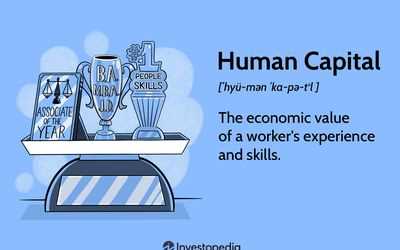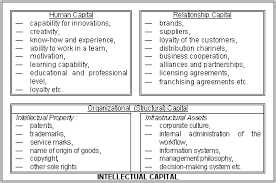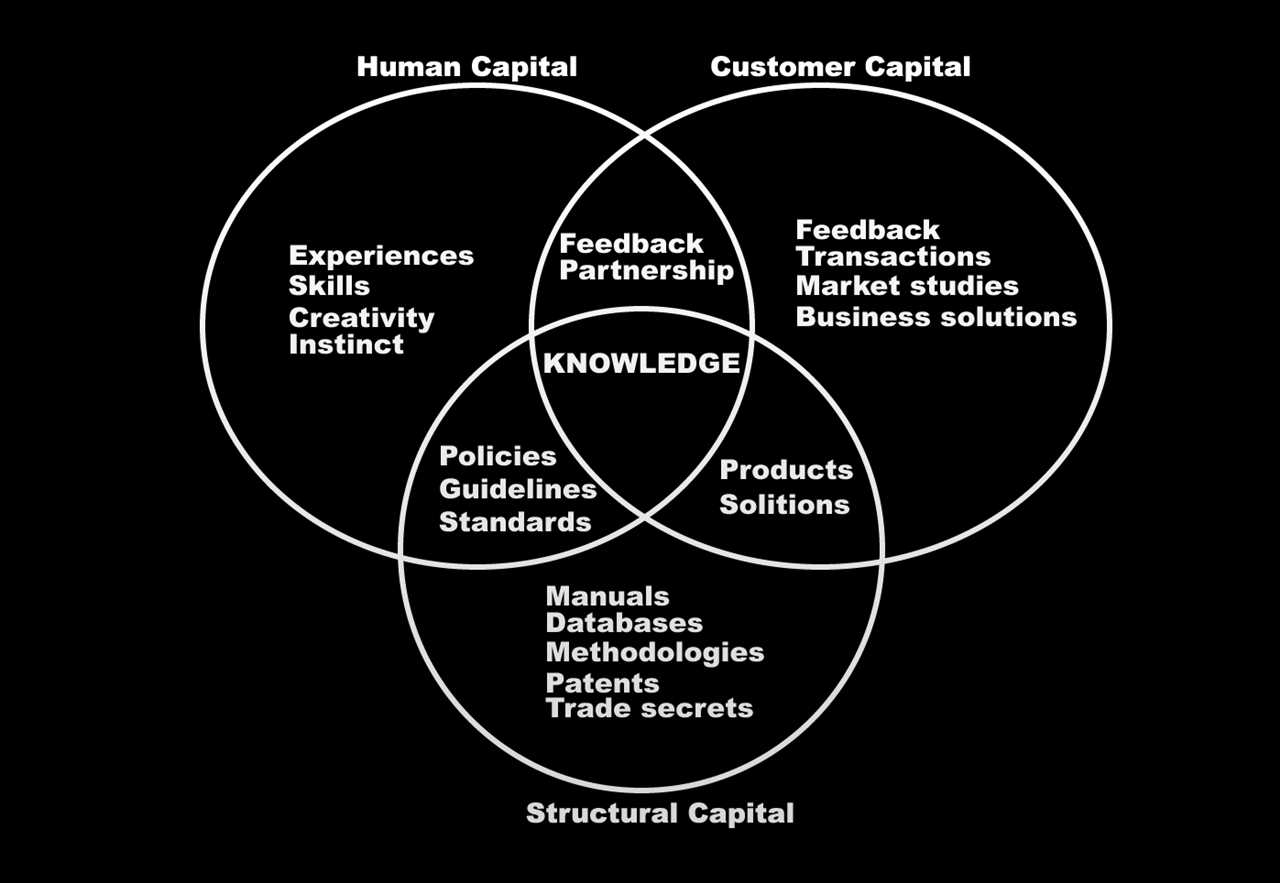What is Intellectual Capital?

There are three main components of intellectual capital:
- Human capital: This refers to the knowledge, skills, and expertise of employees. It includes their education, training, experience, and ability to innovate and solve problems. Human capital is a key driver of organizational performance and success.
- Structural capital: This encompasses the systems, processes, and intellectual property of a company. It includes patents, trademarks, copyrights, databases, software, and other intangible assets that support the organization’s operations and create value.
- Relational capital: This refers to the relationships, networks, and reputation of a company. It includes customer relationships, supplier relationships, partnerships, and the company’s brand image. Relational capital plays a crucial role in attracting and retaining customers, as well as accessing resources and opportunities.
Intellectual capital is not easily quantifiable, but it can be measured and managed to enhance its value and impact on the organization. Companies can use various methods and tools to measure intellectual capital, such as balanced scorecards, intellectual capital statements, and knowledge management systems.
Types of Intellectual Capital

Intellectual capital refers to the intangible assets that contribute to the value and competitiveness of a company. These assets are not physical in nature, but rather consist of knowledge, skills, and other intangible resources that are unique to the organization. There are three main types of intellectual capital:
1. Human Capital
Human capital refers to the knowledge, skills, and abilities of the employees within an organization. It encompasses the education, training, experience, and expertise that individuals bring to their work. Human capital is crucial for innovation, problem-solving, and overall organizational performance. Companies that invest in the development and retention of their employees can gain a competitive advantage by leveraging their human capital.
2. Structural Capital
Structural capital refers to the infrastructure, systems, and processes that support the creation and dissemination of knowledge within an organization. This includes intellectual property, such as patents and trademarks, as well as databases, software, and other technological resources. Structural capital also encompasses the organization’s culture, values, and relationships with stakeholders. Companies that effectively manage their structural capital can enhance their ability to innovate, collaborate, and adapt to changing market conditions.
3. Relational Capital
Measurement of Intellectual Capital

Intellectual capital refers to the intangible assets of a company that contribute to its overall value and competitiveness. These intangible assets include knowledge, skills, patents, trademarks, copyrights, brand reputation, customer relationships, and organizational culture. Measuring intellectual capital is essential for companies to understand and manage these intangible assets effectively.
Methods of Measurement

There are several methods used to measure intellectual capital, each focusing on different aspects of intangible assets. Some common methods include:
1. Human Capital Measurement: This method focuses on measuring the knowledge, skills, and capabilities of employees within an organization. It includes assessing factors such as education, training, experience, and expertise. One way to measure human capital is through surveys and interviews to gather information about employee qualifications and competencies.
2. Structural Capital Measurement: This method focuses on measuring the organizational structures, processes, and systems that support knowledge creation and sharing. It includes assessing factors such as information technology infrastructure, intellectual property, databases, and organizational culture. One way to measure structural capital is through analyzing the company’s documentation, patents, and trademarks.
3. Relational Capital Measurement: This method focuses on measuring the relationships and networks that a company has with its customers, suppliers, partners, and other stakeholders. It includes assessing factors such as customer satisfaction, loyalty, and brand reputation. One way to measure relational capital is through surveys and feedback from customers and stakeholders.
Challenges in Measurement
Measuring intellectual capital can be challenging due to its intangible nature. Unlike financial assets, which can be easily quantified and measured, intellectual capital requires more subjective and qualitative methods. Additionally, intellectual capital is dynamic and constantly evolving, making it difficult to capture its full value at a specific point in time.
Another challenge is the lack of standardized measurement frameworks and metrics for intellectual capital. Companies often develop their own measurement models based on their specific needs and industry. However, this lack of standardization makes it difficult to compare and benchmark intellectual capital across different companies and industries.
Importance of Measurement
Despite the challenges, measuring intellectual capital is crucial for companies for several reasons:
2. Performance Evaluation: Measuring intellectual capital allows companies to evaluate their performance and identify areas of strength and weakness. It provides insights into the effectiveness of knowledge management initiatives, employee development programs, and customer relationship management strategies.
Importance of Intellectual Capital
There are several reasons why intellectual capital is important:
| 1. Competitive Advantage: | Intellectual capital can provide organizations with a competitive advantage by enabling them to develop innovative products and services, improve operational efficiency, and differentiate themselves from competitors. It allows organizations to leverage their knowledge and expertise to create unique value for customers. |
| 2. Value Creation: | Intellectual capital is a source of value creation for organizations. It allows them to generate new ideas, develop intellectual property, and create knowledge-based assets that can be monetized. By effectively managing and leveraging their intellectual capital, organizations can increase their market value and financial performance. |
| 3. Employee Engagement and Retention: | Intellectual capital is closely tied to the knowledge, skills, and expertise of employees. Organizations that invest in the development and utilization of intellectual capital are more likely to attract and retain talented individuals. By providing opportunities for learning, growth, and recognition, organizations can enhance employee engagement and motivation. |
| 4. Innovation and Adaptability: | Intellectual capital is a key driver of innovation and adaptability. Organizations that effectively manage their intellectual capital are better equipped to identify market trends, anticipate changes, and respond to new challenges and opportunities. It allows organizations to continuously improve and evolve their products, processes, and strategies. |
| 5. Organizational Learning: | Intellectual capital facilitates organizational learning and knowledge sharing. It enables organizations to capture, store, and disseminate knowledge and best practices, both internally and externally. By fostering a culture of continuous learning and knowledge exchange, organizations can enhance their collective intelligence and improve decision-making. |
| 6. Risk Mitigation: | Intellectual capital can help organizations mitigate risks and uncertainties. By leveraging their intellectual capital, organizations can develop capabilities and competencies that enable them to adapt to changing market conditions, mitigate potential disruptions, and navigate complex business environments. It allows organizations to be more resilient and agile. |

Emily Bibb simplifies finance through bestselling books and articles, bridging complex concepts for everyday understanding. Engaging audiences via social media, she shares insights for financial success. Active in seminars and philanthropy, Bibb aims to create a more financially informed society, driven by her passion for empowering others.
